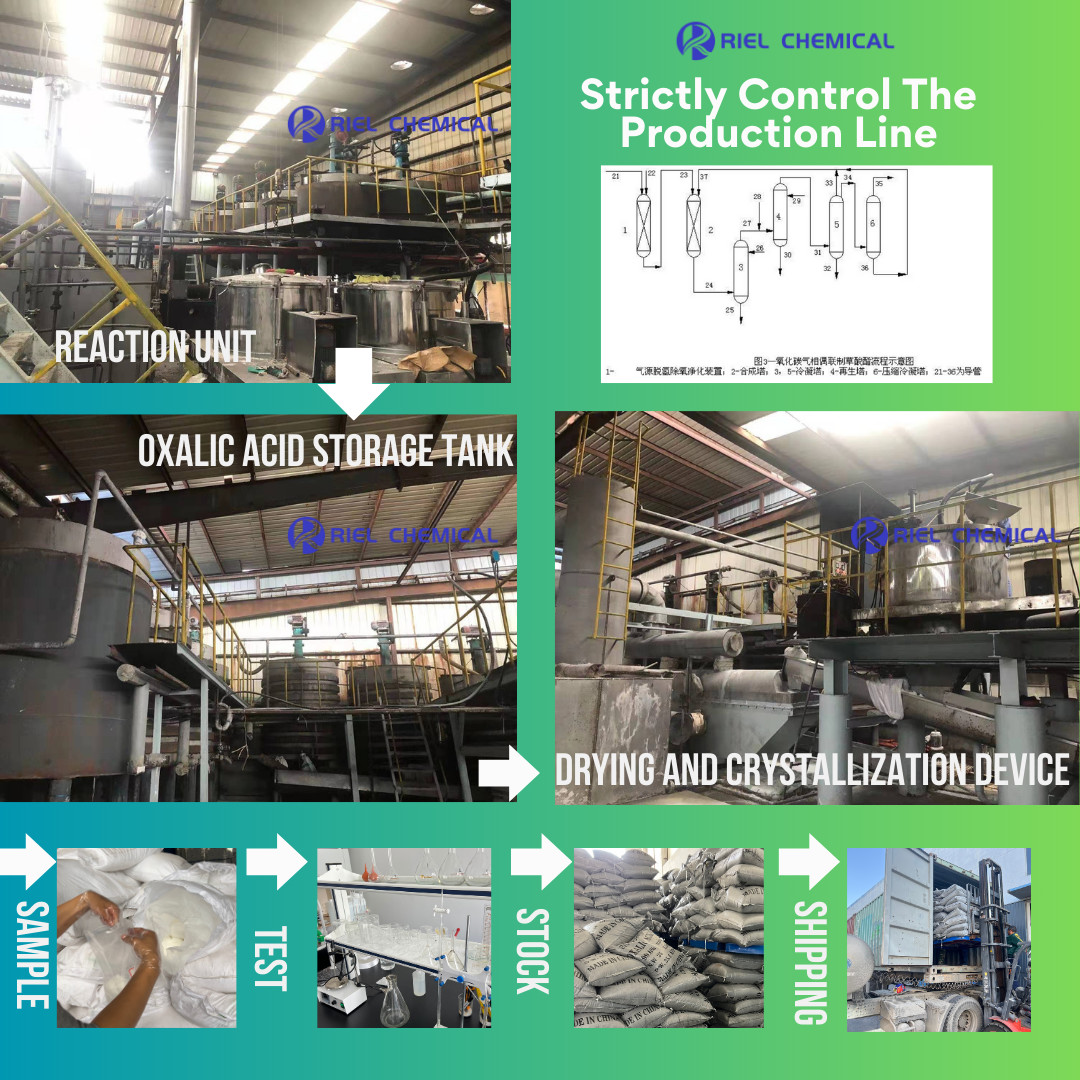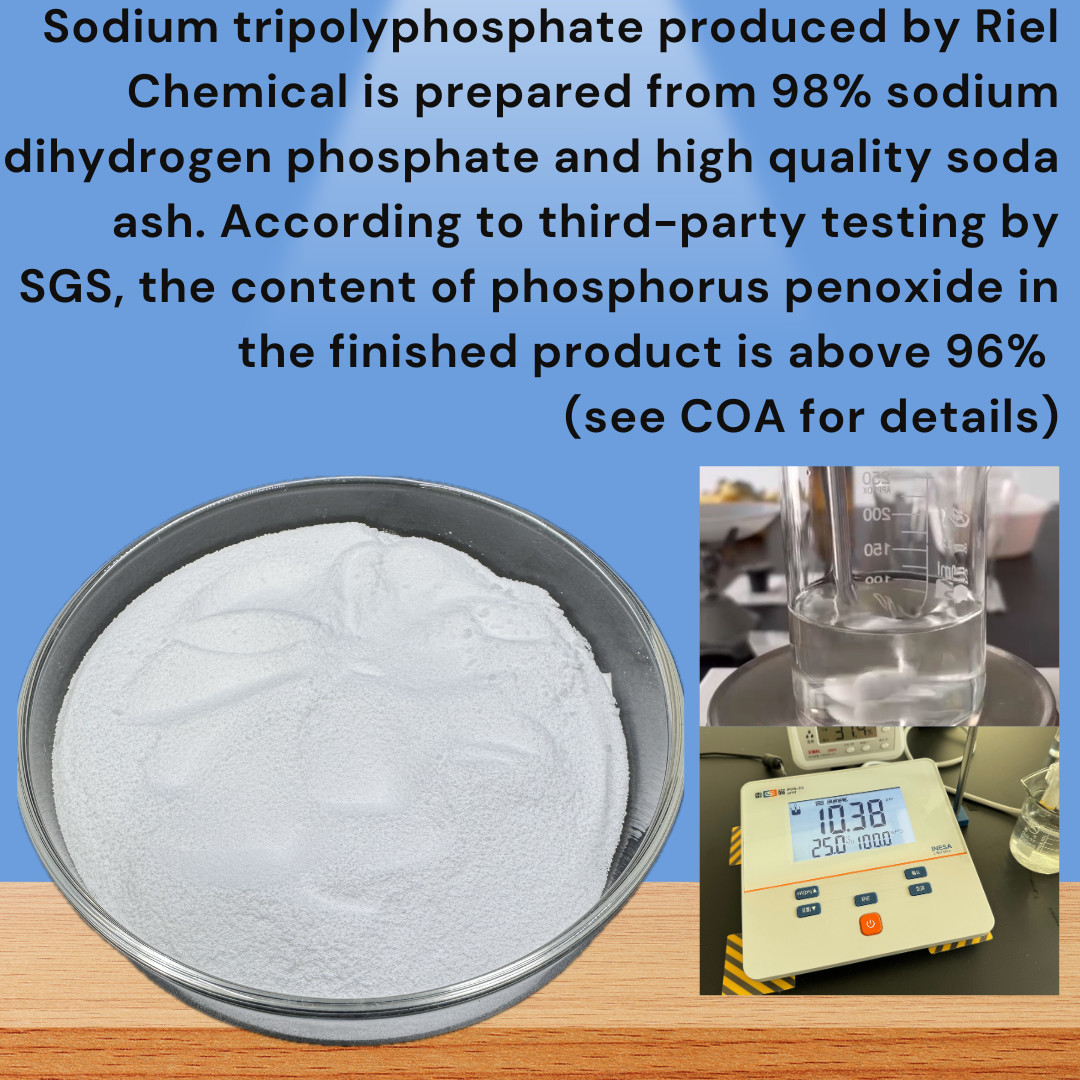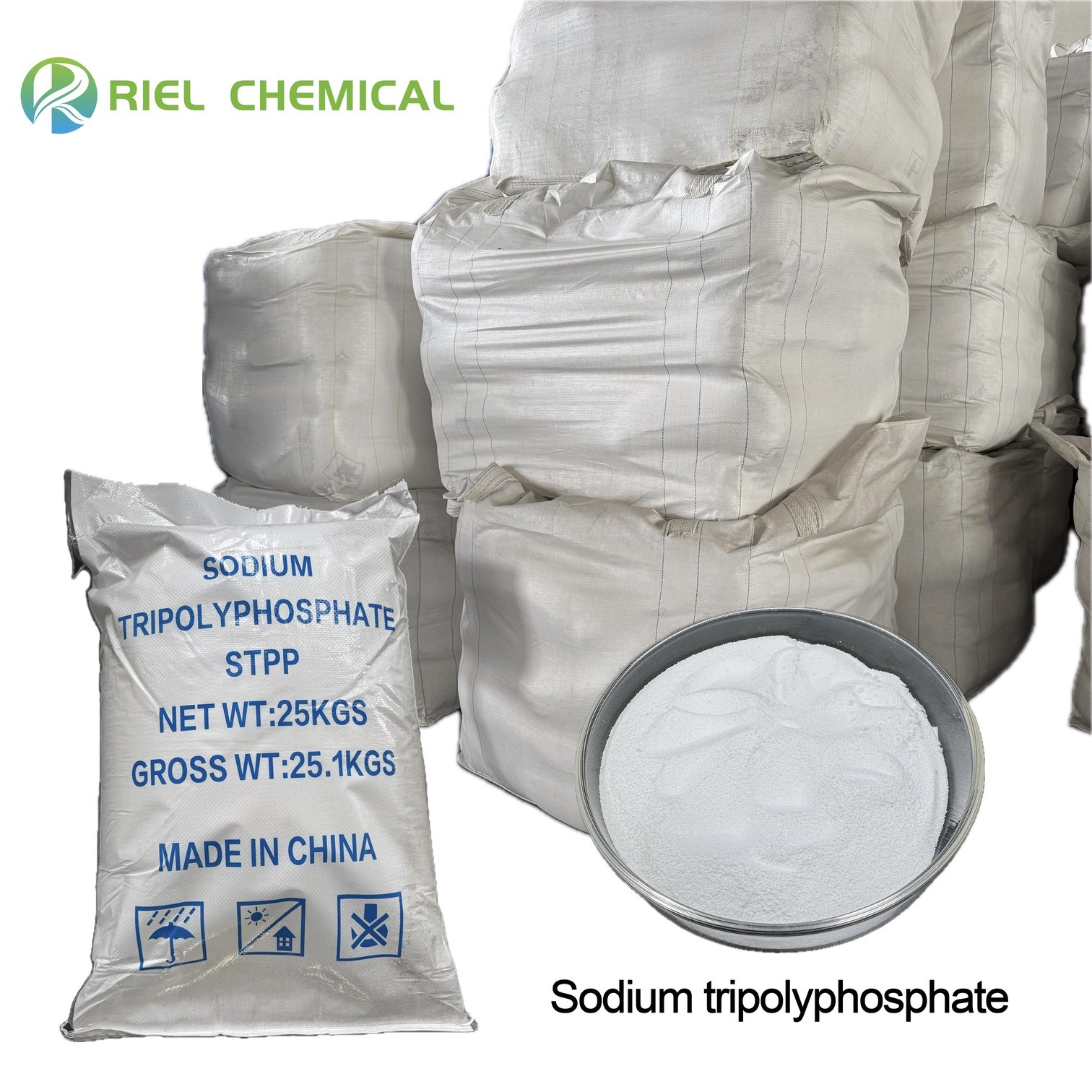| Sign In | Join Free | My frbiz.com |
|
- Home
- Products
- About Us
- Quality Control
- Contact Us
- Get Quotations
| Sign In | Join Free | My frbiz.com |
|
Brand Name : Riel Chemical
Model Number : 96%
Certification : SGS,ISO9001,CE
Place of Origin : Weifang
MOQ : 1 ton
Price : USD 600/TONS FOB
Payment Terms : L/C,T/T
Supply Ability : 50 tons per day
Delivery Time : 5 work day
Packaging Details : 25 kg polyethylene woven bag, moisture-proof, easy to transport
CAS : 7758-29-4
EINECS : 231-838-7
Appearance : White powder
Crystalline hydrate : No Water crystals
Life spen : Two years
Stats : Chemical materials
PH : 9~10
96% CAS 7758-29-4 Sodium Tripolyphosphate for Industrial Manufacturing
Key attributes
Molecular formula: Na5P3O10
Molecular weight: 367.86
Industrial grade CAS 7758-29-4
Industrial grade products & COA meets GB/T 9983-2004 standard:
| Items for detecting and analyzing | Standard value |
| Main content: sodium tripolyphosphate ≥ | 96.0% |
| Phosphorus pentoxide P2O5≤ | 57.0% |
| water insoluble≤ | 0.10% |
| Fluoride (as F) ≤ | 0.007% |
| Ph Value (1%) | 9.2-10.0 |
| Whiteness ≥ | 90 |
Food grade CAS 7758-29-4
Food grad products & COA meets QB 1034-1991standard:
| Items for detecting and analyzing | Standard value |
| Main content: sodium tripolyphosphate ≥ | 95.0% |
| Phosphorus pentoxide P2O5≤ | 57.0% |
| water insoluble≤ | 0.05% |
| Fluoride (as F) ≤ | 0.003% |
| Heavy martial (as Pb) ≤ | 0.001% |
| Arsenic (as As) ≤ | 0.0003% |
| Sulphate (as SO4)≤ | 0.4% |
| Chlorine (as Cl) ≤ | 0.025% |
| Ph Value (1%) | 9.5-10.0 |
| Whiteness ≥ | 85 |
References: Riel Chemical Lab1&2, National public service platform for standards information.
Sodium tripolyphosphate/ STPP
Industrial grade 96% CAS 7758-29-4
Food grade 85% CAS 7758-29-4
Molecular formula Na5P3O10
Molecular weight 367.86
【 Performance Characteristics 】
White granular or powder, showing a density of 0.35-0.90G/CM3, melting point 622 degrees Celsius.
It is easily soluble in water, the aqueous solution is alkaline, and the PH of 1% aqueous solution is 9.7.
It is gradually hydrolyzed into phosphite in water, and has good ionic ability of metal complexation.
It can be complexed with calcium/magnesium/iron and
other metal ions to produce soluble complexes. It softens hard water. As a kind of inorganic surfactant,
it has some properties of organic surfactant.
【 Purpose 】
Mainly used for synthetic detergent as an additive/soap agent and to prevent bar soap grease precipitation and
frosting. It has a strong emulsifying effect on lubricating oil and fat, and can be used to
adjust the PH value of buffer soap liquid, industrial water softener/tanning and
pre-tanning agent/dyeing agent/paint/kaolin/magnesium oxide/calcium carbonate and
other industries to prepare suspension as a dispersant, drilling mud dispersant,
and paper industry as an anti-oil agent.


What are chemical raw materials
The definition of Chemical Raw Materials
Chemical raw materials refer to natural or synthetic basic substances used in the production of chemicals, materials or finished products, and they are the cornerstone of the chemical industry. They are transformed into industrial products of higher value through physical, chemical or biological processing and are widely used in fields such as energy, medicine, agriculture, construction and electronics.
Classification of chemical raw materials
According to their sources, uses and chemical properties, chemical raw materials can be classified into the following major categories:
Classify by source
Inorganic chemical raw materials
Derived from minerals or inorganic reactions, such as sulfur (S), hydrochloric acid (HCl), sulfuric acid (H₂SO₄), caustic soda (NaOH), sodium carbonate (Na₂CO₃), etc.
Typical uses: fertilizer, glass, ceramics, water treatment.
Organic chemical raw materials
Carbon-containing compounds, mainly derived from petroleum (petrochemical products), natural gas, coal or biomass such as ethylene (C₂H₄), benzene (C₆H₆), methanol (CH₃OH).
Typical uses: plastics, synthetic fibers, pharmaceuticals, dyes.
2. Classify by use
Basic raw materials:
It is used for the production of other chemicals, such as ethylene and propylene (plastic raw materials) produced from petroleum cracking, or ammonia (NH₃, used in fertilizers).
Intermediate
Transition products in the production process, such as ethylene oxide (used to manufacture ethylene glycol, that is, antifreeze).
Terminal chemicals
It is directly used in industry or consumption, such as polyethylene (PE) plastic pellets, coatings, and active ingredients in pharmaceuticals.
3. Classification by form
Gases: such as oxygen (O₂), nitrogen (N₂), chlorine (Cl₂).
Liquids: such as sulfuric acid, benzene, ethanol.
Solids: such as sulfur, soda ash (Na₂CO₃), polymer particles.

FAQ
1.What is your payment term?
We can accept T/T and L/C at sight as payment term.
2.Are you able to deliver on time?
Of course! we specialised in this line for many years,
many customer make a deal with me because we can deliver the goods on time and keep the goods top quality!
3.Do you provide free sample?
Yes, we can provide free sample . You only need to take the express fee.
4.How about the price?Can you make it cheaper?
We always take the customer’s benefit as the top priority.
Price is negotiable under different conditions, we are assuring you to get the most competitive price.
5.Can I visit your company and factory in China?
Sure. You are very welcomed to visit our company in Weifang, China.
(We will have someone responsible for picking up and dropping off at Weifang Airport)
6.What if there is a quality problem?
We have a professional and perfect after-sales service team, timely for you to deal with all problems.
|
|
96% CAS 7758-29-4 Sodium Tripolyphosphate For Industrial Recommendation Images |